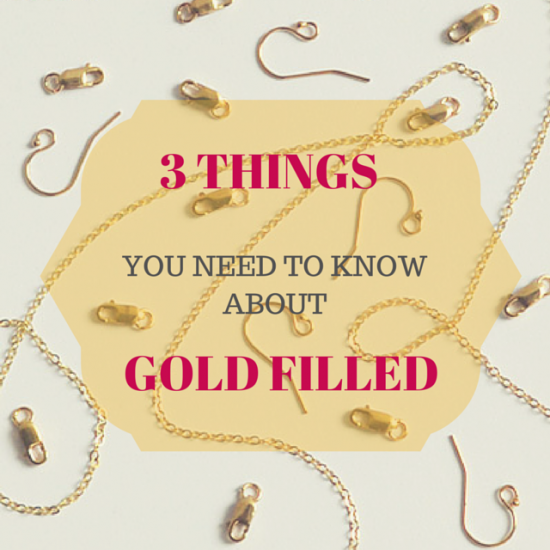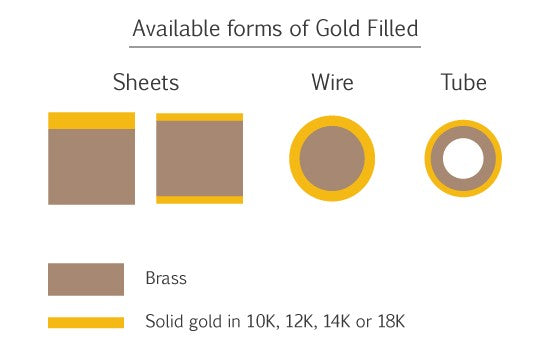
- What is Gold filled made up of?
Gold filled, also known as "rolled gold" or "gold overlay" is made up of a layer of solid gold (see
article about solid gold) bonded with heat and pressure to a base metal such as brass (alloy composed of copper and zinc). Gold filled comes available to jewelers in different forms: in sheets (single or double sided with gold), in wires and in tubes with an external layer of solid gold. In order for a metal to be legally considered Gold Filled, it must have a gold content of at least 5% of the total weight of the item.

- The different Karats of Gold Filled
Since it has a layer of solid gold, this layer can be in the different fineness of gold : 18K, 14k, etc. (see
article about solid gold). When reading 14/20 stamped on a piece of gold filled it means that the layer of gold is in 14 karat gold and that the fraction of gold on the total weight of the piece is 1/20 aka the mandatory 5%.
- Limits in the use of Gold Filled
While gold filled is a good affordable alternative to solid gold it has limitations in the forms it can be used due to its manufacturing process. As shown in the diagram above, gold filled is only available in the form of sheets, wires and tubes and can't be cast. Casting is a very common way of producing any 3 dimensional metal pieces through the method of the lost wax technique by most jewelers. Since casting consists of melting, the gold and the base metal from the gold filled would be mixed together and the surface presented to the wearer would not be solely gold anymore. This is why you can only find a limited array of gold filled pieces: they must be made from sheet, wire or tube which is the case of findings like ear wires or chains for example.
Gold filled is just below solid gold when it comes to quality and value. It has the look of solid gold without its price and is often a very good option to avoid tarnishing and allergy problems.




